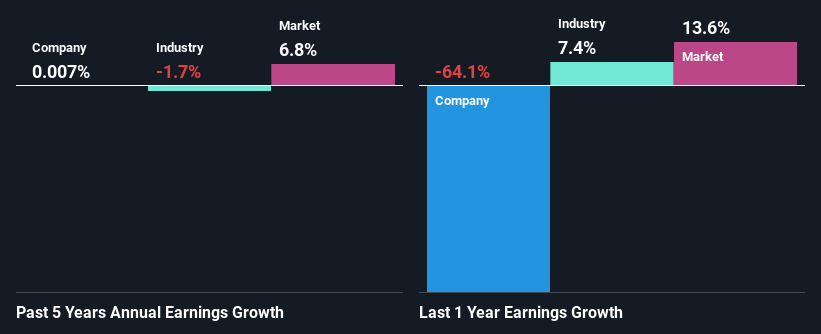Trustpower Limited (NZSE:TPW) Stock's On A Decline: Are Poor Fundamentals The Cause?
It is hard to get excited after looking at Trustpower's (NZSE:TPW) recent performance, when its stock has declined 9.8% over the past three months. Given that stock prices are usually driven by a company’s fundamentals over the long term, which in this case look pretty weak, we decided to study the company's key financial indicators. In this article, we decided to focus on Trustpower's ROE.
ROE or return on equity is a useful tool to assess how effectively a company can generate returns on the investment it received from its shareholders. Put another way, it reveals the company's success at turning shareholder investments into profits.
View our latest analysis for Trustpower
How To Calculate Return On Equity?
Return on equity can be calculated by using the formula:
Return on Equity = Net Profit (from continuing operations) ÷ Shareholders' Equity
So, based on the above formula, the ROE for Trustpower is:
2.8% = NZ$31m ÷ NZ$1.1b (Based on the trailing twelve months to March 2021).
The 'return' is the amount earned after tax over the last twelve months. So, this means that for every NZ$1 of its shareholder's investments, the company generates a profit of NZ$0.03.
What Is The Relationship Between ROE And Earnings Growth?
We have already established that ROE serves as an efficient profit-generating gauge for a company's future earnings. Based on how much of its profits the company chooses to reinvest or "retain", we are then able to evaluate a company's future ability to generate profits. Assuming everything else remains unchanged, the higher the ROE and profit retention, the higher the growth rate of a company compared to companies that don't necessarily bear these characteristics.
A Side By Side comparison of Trustpower's Earnings Growth And 2.8% ROE
It is hard to argue that Trustpower's ROE is much good in and of itself. Even when compared to the industry average of 6.1%, the ROE figure is pretty disappointing. Therefore, Trustpower's flat earnings over the past five years can possibly be explained by the low ROE amongst other factors.
As a next step, we compared Trustpower's net income growth with the industry and were disappointed to see that the company's growth is lower than the industry average growth of 6.8% in the same period.
The basis for attaching value to a company is, to a great extent, tied to its earnings growth. The investor should try to establish if the expected growth or decline in earnings, whichever the case may be, is priced in. Doing so will help them establish if the stock's future looks promising or ominous. One good indicator of expected earnings growth is the P/E ratio which determines the price the market is willing to pay for a stock based on its earnings prospects. So, you may want to check if Trustpower is trading on a high P/E or a low P/E, relative to its industry.
Is Trustpower Using Its Retained Earnings Effectively?
Trustpower has a very high three-year median payout ratio of 113% over the last last three years, which suggests that the company is dipping into more than just its earnings to pay its dividend. The absence in growth is therefore not surprising. Paying a dividend beyond their means is usually not viable over the long term. That's a huge risk in our books. You can see the 3 risks we have identified for Trustpower by visiting our risks dashboard for free on our platform here.
Additionally, Trustpower has paid dividends over a period of five years, which means that the company's management is determined to pay dividends even if it means little to no earnings growth. Based on the latest analysts' estimates, we found that the company's future payout ratio over the next three years is expected to hold steady at 99%. Regardless, the future ROE for Trustpower is predicted to rise to 11% despite there being not much change expected in its payout ratio.
Conclusion
Overall, we would be extremely cautious before making any decision on Trustpower. Specifically, it has shown quite an unsatisfactory performance as far as earnings growth is concerned, and a poor ROE and an equally poor rate of reinvestment seem to be the reason behind this inadequate performance. Having said that, looking at the current analyst estimates, we found that the company's earnings are expected to gain momentum. To know more about the latest analysts predictions for the company, check out this visualization of analyst forecasts for the company.
This article by Simply Wall St is general in nature. It does not constitute a recommendation to buy or sell any stock, and does not take account of your objectives, or your financial situation. We aim to bring you long-term focused analysis driven by fundamental data. Note that our analysis may not factor in the latest price-sensitive company announcements or qualitative material. Simply Wall St has no position in any stocks mentioned.
Have feedback on this article? Concerned about the content? Get in touch with us directly. Alternatively, email editorial-team (at) simplywallst.com.

 Yahoo Finance
Yahoo Finance 
